Network television and I are the same age. I am of the first generation with that thing in the living room giving us all kinds of ideas. I’m sure adults were already speculating whether this new bit of furniture was changing people on a societal level (it was) but we were just making memories. And eating a lot of cereal.

Today, we have access to pretty much everything that ever happened on TV, with two major exceptions: Fabian’s controversial guest appearance on Bus Stop and TV salesperson Suzanne Somers proclaiming “My face is in hot scones!” So I’ve been looking back at some early faves, raves and crushes.
In the beginning there were the three major networks, plus the struggling, soon-gone Dumont outfit. If you were lucky, your hometown airwaves supplied a few local stations. These outlets needed stuff to put on our screens, so they dipped into Hollywood’s deep bargain bins. A quarter-century of product since sound, mostly forgettable programmers, B-pictures and selected short subjects, all of it easily trimmed to fill the gaps between commercials, station identifications, and this thing:
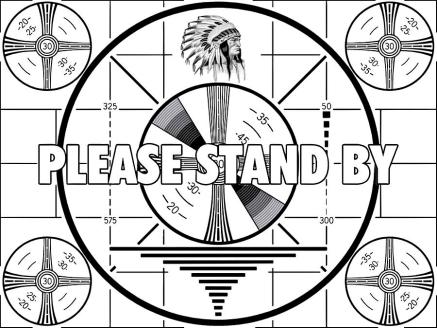
So while the grownups owned the night (prime time was for folks who bought things), the kids divvied up the rest: third-string musicals, dumb comedies, creaky melodramas and back-lot jungle flicks. The western was especially well represented in this B swarm. The moguls of discount Hollywood had been turning out hundreds of oat operas, most of them running five or six reels—an hour-ten each, give or take. These films had served in World War II, entertaining the troops in barracks and aboard ships all over the world. Westerns were perfect diversions: guy-friendly morality plays, easy on the cerebrum but full of fightin’, ridin’, and shootin’, with just a threat of chicken-fried humor. Good guys and bad guys were clearly marked: the guys in the white hats, like the USA, always won.
After the war, the well-traveled reels found new homes Stateside, just in time for the you-know-what boom. My little pals and I parked it in front of the home screen and absorbed many kid-hours of chases, showdowns and punch-ups. It was largely boy-stuff, but my sister and her friends were fans as well. (We’ll cover the “a six-gun for Billy, a dolly for Sue” social model at another time, or never).
The commercial success of the old flicks would eventually lead to a boom in made-for-TV “adult western” programming. But the heavy hitters—Gunsmoke, Have Gun Will Travel, Bonanza—were still in the future. For the time being, those black-and-white skies belonged to us saddle-pals. We were the Buckaroo Generation.
Many of the Gower Gulch cowboys had passed away or retired by the mid-fifties and some, like John Wayne and Joel McCrae, had become big mainstream stars, but three of the old guard still walked the West. Roy Rogers and Gene Autry were stiff but genial, with decent singing voices and deep, colorful wardrobes. Roy had a sweet wife who could sing and write songs, a horse named Trigger, a dog named Bullet, and an idiot partner named Pat who had a jeep named Nellybelle. Gene had a guitar but no visible wife, a horse named Champion and an idiot partner named Pat who had no jeep, just a mule named Dandruff. So yes, Gene had a funnier Pat.
The third didn’t sing a lick, wore basic black, and, unlike Roy or Gene, didn’t use his own name in the stories. The actor’s name was William Boyd, and the character’s name was William “Hopalong” Cassidy. Hoppy had a horse named Topper and rode with a clean-cut young cowpoke who kept falling in love, and a grizzled idiot who kept falling down.
The cowboy boom was naturally accompanied by a frenzied market in wild-west goods and services. My mom took my sister and me to see the Roy Rogers Rodeo at Madison Square Garden. It was a whole lot of rodeo with a cameo by Roy and Trigger: thrice around the arena, then “Happy trails…” My father worked at Columbia Records, who released some of Gene Autry’s mostly kid-oriented hits. My very own dad had met the guy! So some of us knew these weren’t actual cowpokes or rough-rilawmen. They were people called actors and making western movies was their job. My observant big sister Pat reinforced this notion by noting that cowboys out on the trail never seemed to need the bathroom—further evidence that TV wasn’t real life.

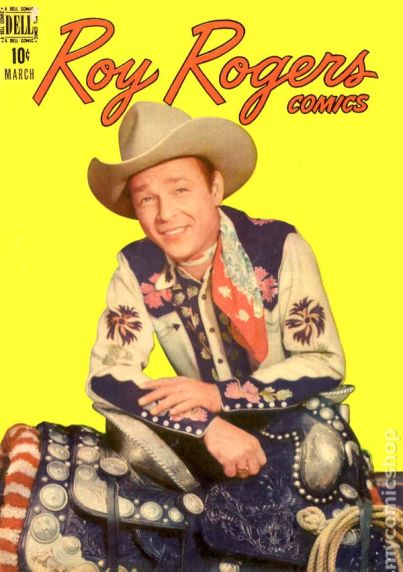
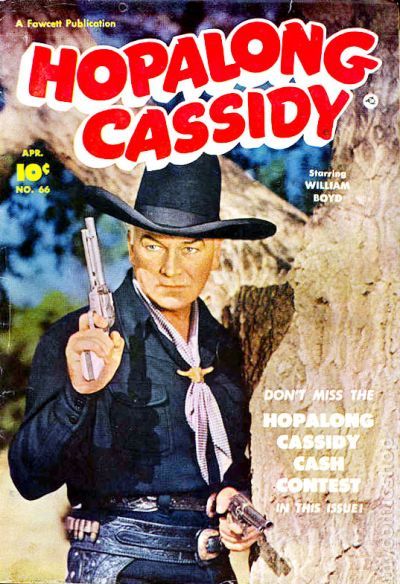
I liked them all just fine, but Hopalong Cassidy was my guy. Whereas Roy and Gene wore snazzy outfits, heavy on the pearl buttons and side-piping, Hoppy wore solid black or dark gray. He was boss of the Bar 20 ranch, not that the films dwelt overmuch on this enterprise. He was also regularly deputized by authorities to right the odd wrong, for his rep as a straight-shooter was universally known. Plus, he was always volunteering his services to underdog causes—typically a floundering school (with attendant ‘marm) or a decent family being taken by unscrupulous money-grubbers.
He seemed to love the life he led, even when it occasionally left him bushwhacked, dry-gulched or tied to a powder-keg in the abandoned mineshaft. He had a sharp eye for trouble and had no difficulty in throwing the first punch, purely as a preventative measure. His speed with the irons was well known, and only tested by fools. He complied with the law as a matter of course, but wasn’t so naïve as to believe all local constabularies were on the level. He (and we) had learned that the hard way. Maybe “world-wise” is what I felt but didn’t have a name for.
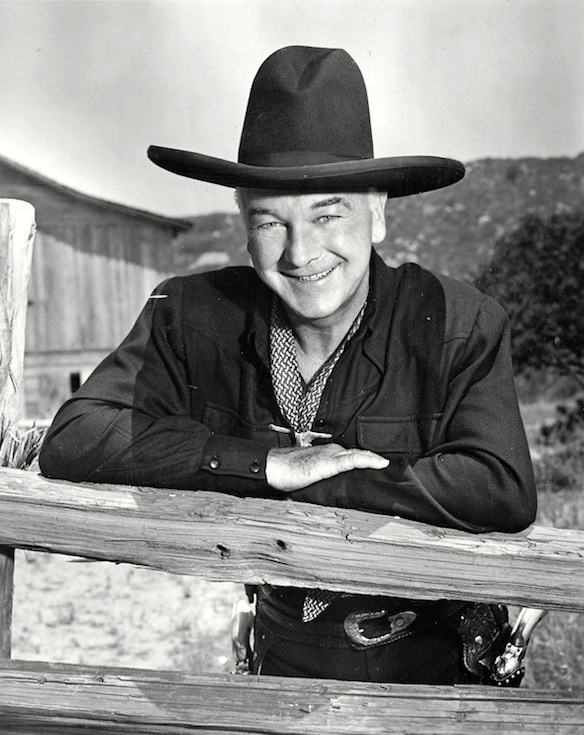
I’ve been watching a lot of the William Boyd oeuvre lately, thanks to YouTube, Amazon and the Starz Western channel, just to see how things square up with the current me. Some of the numbers are staggering: Boyd was 42 when he first played Clarence E. Mulford’s seen-it-all trail vet, 30 years younger than I am currently, so there’s that. To a five year old, of course, he seemed as old as the hills. Not as old as California Carlson, of course: that august gentleman (played by Mack Sennett alum Andy Clyde) was only three years older than Boyd, but had been playing old geezers since his twenties. The delirious Mr. Carlson divided his day between bullshitting and sundowning, while Lucky, the juvenile represented the spirit of restless youth and clumsy lust.
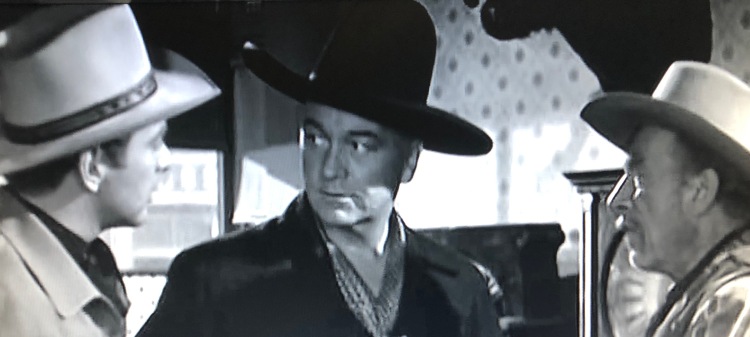
From the perspective that time and cable have granted me, and being a genuine geezer myself, I can now appreciate Mr. Cassidy from a different perspective. What I had read as grandfatherly sagacity now has the feel of middle-age at its most enviable. Cassidy enjoyed hard-won success in the cattle trade, but more importantly, a deserved reputation as a good man, a champion of the downtrodden and a trustworthy arbiter of knotty situations—preferably without gunplay, but keep those hands in plain sight, friend. A man to reckon with. A mensch.
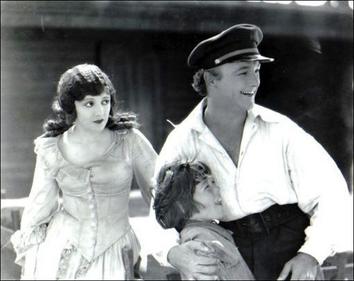
Some of these qualities existed no doubt on the page, but without a real actor on the case that’s where they’d stay. William Boyd had been a major leading man in silent pictures and a useful contract player in early talkies. He knew that he needed to show little and say less to let us know what was up. He had a way of side-eying a questionable character that put us on high alert. He had one smile for his flawed but irreplaceable pals and one just for the womenfolk—a little warmer with a side of shucks. We could see a desperate plan hatch behind his eyes seconds before he made his play, just as we saw the grief of loss (rare in the films, but it happens) breaking through the stoic front.
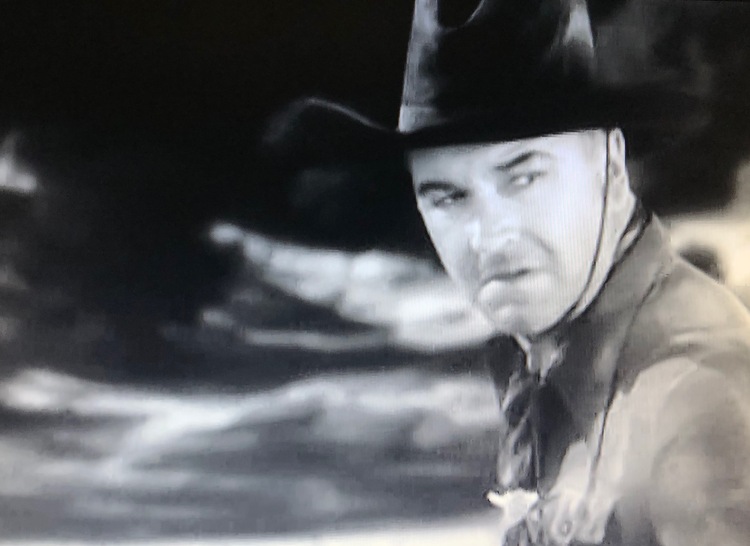
His voice was warm when good will was in the air, cold and final when trouble came calling. And when the smoke had cleared, and sidekick California had suffered some public disaster to comic effect, Boyd/Hoppy uncorked that deep, gutty laugh to cue the fadeout. There was a love of life in those tones. I think that’s what Hoppy was selling…along with the merchandise.
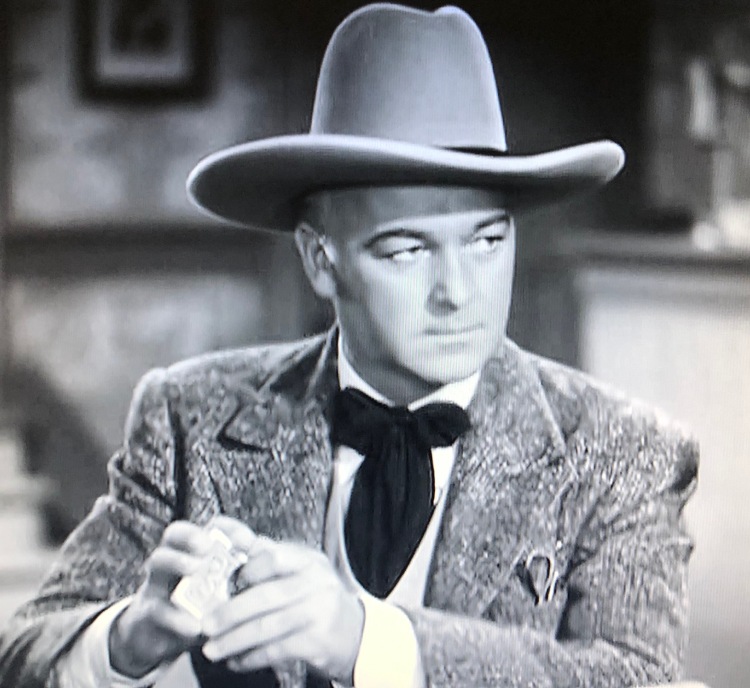
Indeed, Boyd pulled off a coup in the syndication and marketing end of things, buying all of his old movies and securing name-and-likeness rights to Hopalong Cassidy, worldwide. Well into the ‘fifties, Boyd was shooting new half-hour stories, heavy on the narration and sponsored by Wonder Bread or Post Toasties, whose wares were pitched on camera by Hoppy himself. He also appeared at the end of each episode with a direct message to us kiddoes: wash your hands well, drink your milk, help mom, respect the police…and then he’d switch on the smile.
Did I question Hoppy breaking the fourth wall to sell me things and tell me things? Nope. Nor did I think it odd that George “Gabby” Hayes (who subbed for Andy Clyde as resident codger in many of the films) scored his own show, showing the old flicks and loading a cannon (stay with me here) with oats, and firing it straight at us to demonstrate the process whereby Quaker Puffed Cereals are made. (They are not made that way). I watched every fuzzy gray moment. I was a fan.

I wore the black outfit and the newspaper-packed thrift store hat for a solid year, I think. I didn’t insist people call me Hoppy, but if they did, I didn’t correct them. I did modify the look for a bit when I got a load of Lash Larue, whose black shirt featured a lace-up front. When my mom wasn’t looking, I improvised a crisscross pattern on my breastbone with her black fountain pen. But my default look was Bar 20, all the way.

My current deep dive into Cassidyland raises issues not on the six-year-old Mike’s radar, bless his heart. Killings, for example. It’s never Peckinpah-level mayhem (100% bloodless), but there is a respectable body count in many of the films. I didn’t really know what the whole “dead” thing meant, anyway. I just knew when Blackhat McMustache clutched his chest and fell from his saddle, that was good for our side. I just thought of “death” as being synonymous with “out of the game”. Grownup Mike knows better.
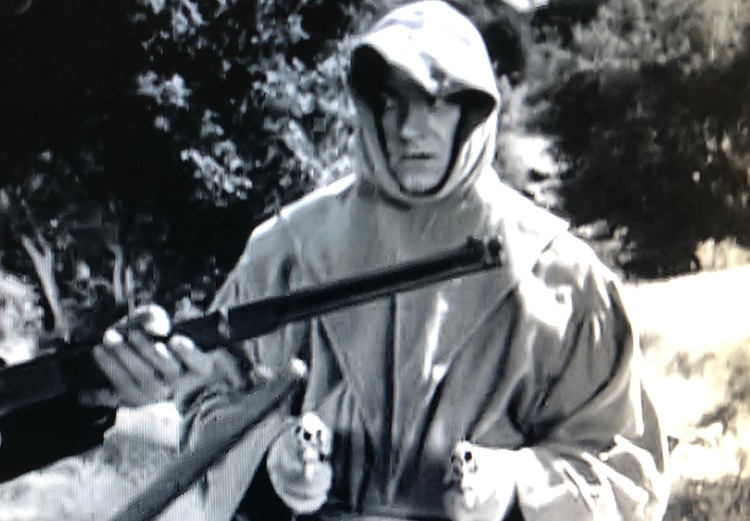
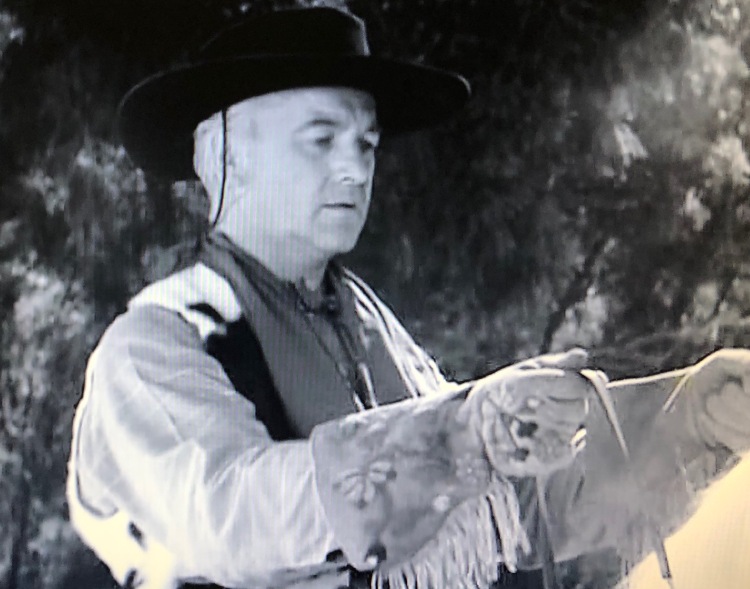
Often, the Cassidy plots would revolve around adult stuff like love, business, and gambling. I don’t imagine I was able to follow how Hoppy beat the crooked card sharps at their own game in The Showdown (1940). I watched that one recently with new (old) eyes and saw a damn well-written, well-played scene. I didn’t know actors names back then, but now I do enjoy seeing actors with bright futures making early appearances: Robert Mitchum, Lee J. Cobb, Jeff Corey, and TV’s first Superman, George Reeves. Little Me would have blanked on all but the last named.

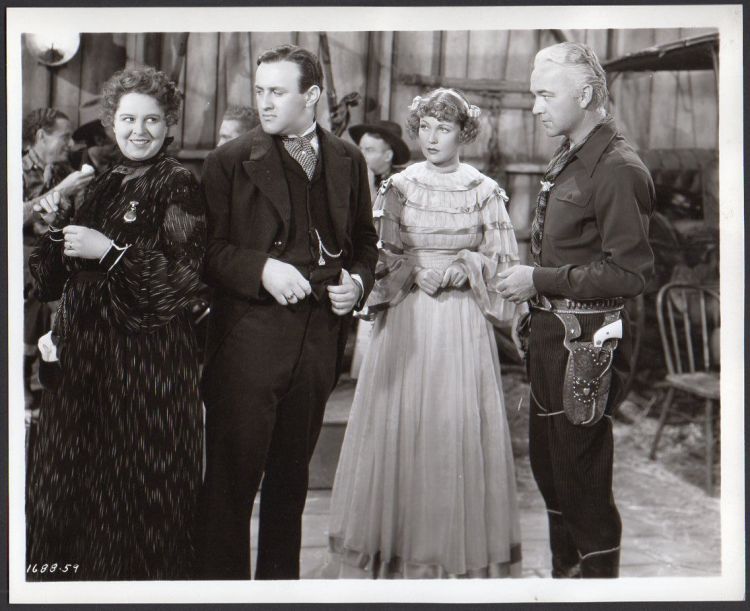
Bill Boyd’s place in the firmament may be unique. He never played another role after creating the character on the screen. When he did TV guest shots he would always be the man in black from the Bar-20, dutifully parroting the stale cowboy jokes with Bob or Bing or Red. But he made himself an object of fun without ever playing the fool.

Oh: and no one else ever played the character again. A one-man franchise, truly.
In the late fifties, westerns became mainstream TV, primetime entertainment. My friends and I still watched them, but felt the talk/action ratio all out of balance. A lot of family drama, social conflict, tears and flapdoodle, but when does the chase start? Disney’s Davy Crockett picked up the action slack for a year or so, but the last stand at the Alamo put the period on the end of that sentence. I was more into monsters now, anyway.
Fandom can fade in a number of ways. Knowing your kid brother is now into your hero can start you looking for something that’s freshly yours. Or maybe you’ve watched your fave-rave go through history’s carwash with the doors open, revealing him/her to be just another mess and not the hero you had assumed.
Doesn’t matter: we move on. The B westerns became kid stuff because we grew up, but there’s good news: sometimes we can look back at that stuff and find the kid. And while I know that Shane is a better movie than Hoppy Serves a Writ, the kid and I are on the same page about the boss of the Bar-20.

Please check out Glen Buttkus’ excellent post: http://bibliosity.blogspot.com/2010/06/hopalong-cassidy.html
Acts 16:31, 1 Corinthians 15:1-8, 1 Peter 1:17-21, Revelation 22:18-19
LikeLike
Michael,
Thanks for your post — I thoroughly enjoy your thoughts and musings on show business, the arts and the human condition. And by the way thank you for decades of memorable performances, not least of which as Charles. I feel we are all close to kicking the table until it all burns down at this point.
LikeLike
Acts 16:31, 1 Cor. 15:1-8, 1 Peter 1:17-21, Rev. 22:18-19
LikeLike
Inspired to plan a date with YouTube and the Bar 20 gentleman tomorrow. What a smile!
LikeLike
Acts 16:31, 1 Cor. 15:1-8, 1 Peter 1:17-21, Rev. 22:18-19
LikeLike
My favorite part of the Hoppy movies is when one of the sidekicks ask ‘you’re not mad at me are you Hoppy?’
and Hoppy just laughs and says ‘aw forget it’.
Forgiveness is an important lesson.
LikeLike
Acts 16:31, 1 Corinthians 15:1-8, 1 Peter 1:17-21, Revelation 22:18-19
LikeLike